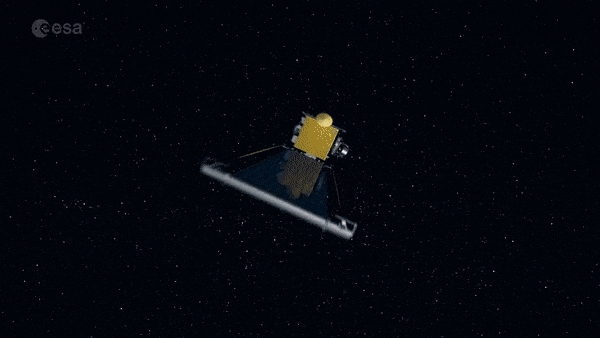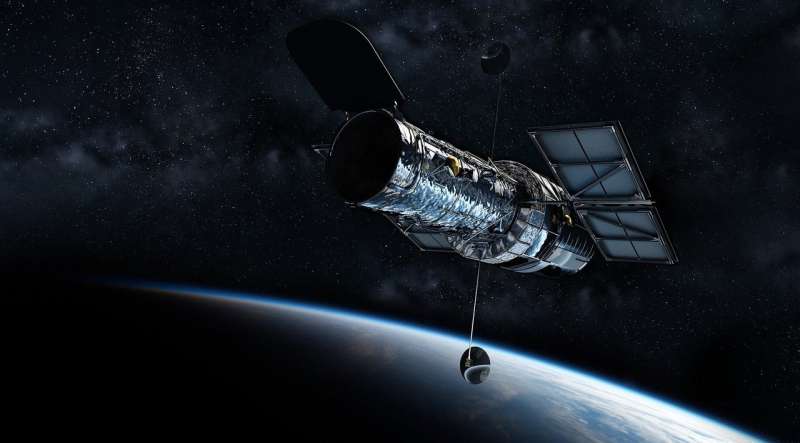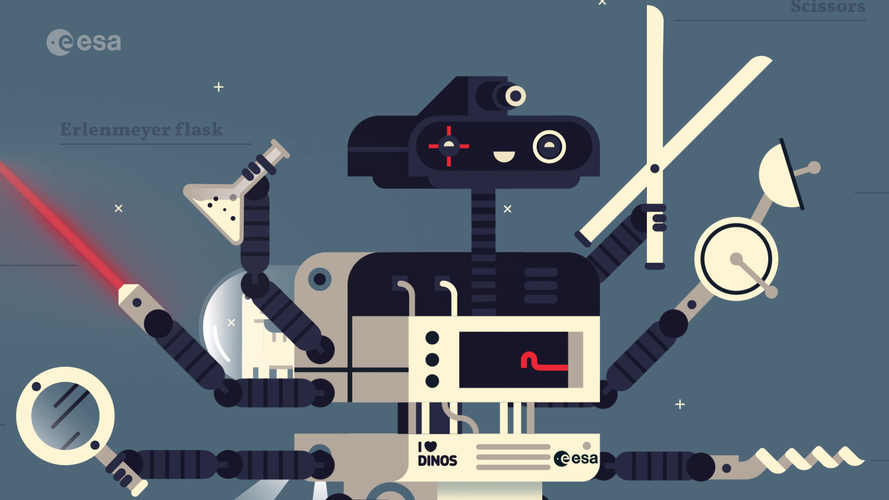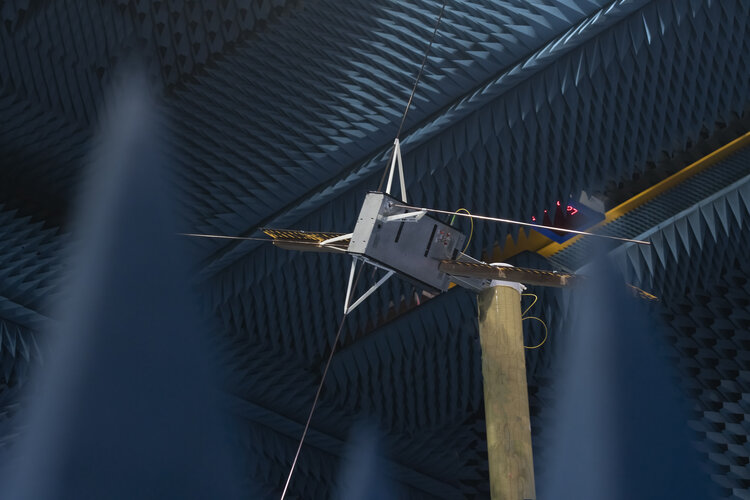
Copernical Team
Planetary defenders: after NASA’s DART comes ESA’s Hera

The world will be watching the milestone launch of NASA’s Double Asteroid Redirection Test, DART, spacecraft on Wednesday, 24 November, intended to alter one small part of the Solar System forever.
Alien organisms: Hitchhikers of the galaxy?

Scientists warn that without good biosecurity measures, 'alien organisms' on Earth may become a reality stranger than fiction.
Published in international journal BioScience, a team of scientists, including Dr. Phill Cassey, Head of the Department of Ecology and Evolutionary Biology at the University of Adelaide, are calling for greater recognition of the biosecurity risks ahead of the space industry.
"In addition to government-led space missions, the arrival of private companies such as SpaceX has meant there are now more players in space exploration than ever before," said Associate Professor Cassey. "We need to take action now to mitigate those risks."
Space biosecurity concerns itself with both the transfer of organisms from Earth to space (forward contamination) and vice-versa (backward contamination). While the research points out that at present the risk of alien organisms surviving the journey is low, it's not impossible.
Dr. Cassey said: "Risks that have low probability of occurrence, but have the potential for extreme consequences, are at the heart of biosecurity management. Because when things go wrong, they go really wrong."
The research provides clear evidence of how humans have spread organisms to the remotest regions of the earth and sea, and even into space.
NASA extends Hubble operations contract, provides mission update

The Hubble Space Telescope, a project of international cooperation between NASA and ESA (European Space Agency), has fundamentally changed the way we view our universe time and again. Now in its 32nd year in space, Hubble has delivered unprecedented insights about the cosmos, from the most distant galaxy observed so far to familiar planets in our neighborhood, including Jupiter, Saturn, Uranus, and Neptune.
"Hubble, with its beautiful images and decades-long series of new discoveries about our universe, has captured the imagination of countless individuals and inspired so many," said Dr. Thomas Zurbuchen, associate administrator for NASA's Science Mission Directorate at the agency's Headquarters in Washington.
With Hubble continuing to make groundbreaking discoveries, the agency has awarded a sole source contract extension to the Association of Universities for Research in Astronomy (AURA) in Washington for continued Hubble science operations support at the Space Telescope Science Institute (STScI) in Baltimore, which AURA operates for NASA. The award extends Hubble's science mission through June 30, 2026, and increases the value of the existing contract by about $215 million (for a total of about $2.4 billion).
The Incredible Adventures of the Hera mission – Episode 2
 Video:
00:03:27
Video:
00:03:27
Meet Hera, our very own asteroid detective. Together with two CubeSats – Milani the rock decoder and Juventas the radar visionary – Hera is off on an adventure to explore Didymos, a double asteroid system that is typical of the thousands that pose an impact risk to planet Earth.
Suitable for kids and adults alike, this episode tells the story of the discovery of asteroids, in ‘The Curious Case of the Missing Planet’. Astronomers in the 18th century were sure there was a planet in the wide gap between Mars and Jupiter – and even formed a group
Satellite attack: the mounting arms race in space
 Last year a US general made an ominous revelation: two Russian satellites in orbit were stalking a US spy satellite high above the earth.
It wasn't clear if the Cosmos satellites could attack USA-245, an American surveillance spacecraft.
"It has the potential to create a dangerous situation in space," said General Jay Raymond, head of the Pentagon's Space Command.
The incident passed
Last year a US general made an ominous revelation: two Russian satellites in orbit were stalking a US spy satellite high above the earth.
It wasn't clear if the Cosmos satellites could attack USA-245, an American surveillance spacecraft.
"It has the potential to create a dangerous situation in space," said General Jay Raymond, head of the Pentagon's Space Command.
The incident passed Testing mini-radar to peer inside asteroid
 Image:
Testing mini-radar to peer inside asteroid
Image:
Testing mini-radar to peer inside asteroid Northrop Grumman meets first-stage rocket motor milestone for Ground Based Strategic Deterrent Program
 Northrop Grumman met a key manufacturing milestone in August, successfully performing the first insulation and case wind of the Ground Based Strategic Deterrent (GBSD) first-stage solid rocket motor.
"Working closely with the Air Force and nationwide team of industry partners, we continue to make progress to modernize the country's aging intercontinental ballistic missile system," said Ste
Northrop Grumman met a key manufacturing milestone in August, successfully performing the first insulation and case wind of the Ground Based Strategic Deterrent (GBSD) first-stage solid rocket motor.
"Working closely with the Air Force and nationwide team of industry partners, we continue to make progress to modernize the country's aging intercontinental ballistic missile system," said Ste L3Harris to upgrade Space Force counter-communications via $125M contract
 L3Harris Technologies received a $125 million multi-year contract to produce space electronic warfare systems that safeguard U.S. military operations and warfighters.
Under the Meadowlands production program, L3Harris will upgrade 16 Block 10.2 versions of Counter-Communications Systems (CCS) operating in Peterson Space Force Base, Colo., Vandenburg Space Force Base, Calif., Cape Canaveral
L3Harris Technologies received a $125 million multi-year contract to produce space electronic warfare systems that safeguard U.S. military operations and warfighters.
Under the Meadowlands production program, L3Harris will upgrade 16 Block 10.2 versions of Counter-Communications Systems (CCS) operating in Peterson Space Force Base, Colo., Vandenburg Space Force Base, Calif., Cape Canaveral Space Force, Georgia Tech partner on STEM education, innovation
 The US Space Force established an agreement with the Georgia Institute of Technology Nov, 11, making Georgia Tech the latest entrant into the Space Force's University Partnership Program.
Lt. General Nina M. Armagno, U.S. Space Force director of staff, joined Georgia Tech Provost Steven W. McLaughlin and Executive Vice President for Research Chaouki T. Abdallah to sign the agreement. The s
The US Space Force established an agreement with the Georgia Institute of Technology Nov, 11, making Georgia Tech the latest entrant into the Space Force's University Partnership Program.
Lt. General Nina M. Armagno, U.S. Space Force director of staff, joined Georgia Tech Provost Steven W. McLaughlin and Executive Vice President for Research Chaouki T. Abdallah to sign the agreement. The s US accuses Russia of generating orbital debris after 'destructive' satellite test, vows to respond
 The United States has accused the Russian Federation of conducting a "destructive satellite test" that could put astronauts, cosmonauts, and global satellite operations at risk.
Through the U.S. State Department's spokesperson, Ned Price, it was revealed that the alleged test was conducted early Monday. Price went on to condemn the action, calling it "reckless."
The test was describe
The United States has accused the Russian Federation of conducting a "destructive satellite test" that could put astronauts, cosmonauts, and global satellite operations at risk.
Through the U.S. State Department's spokesperson, Ned Price, it was revealed that the alleged test was conducted early Monday. Price went on to condemn the action, calling it "reckless."
The test was describe 